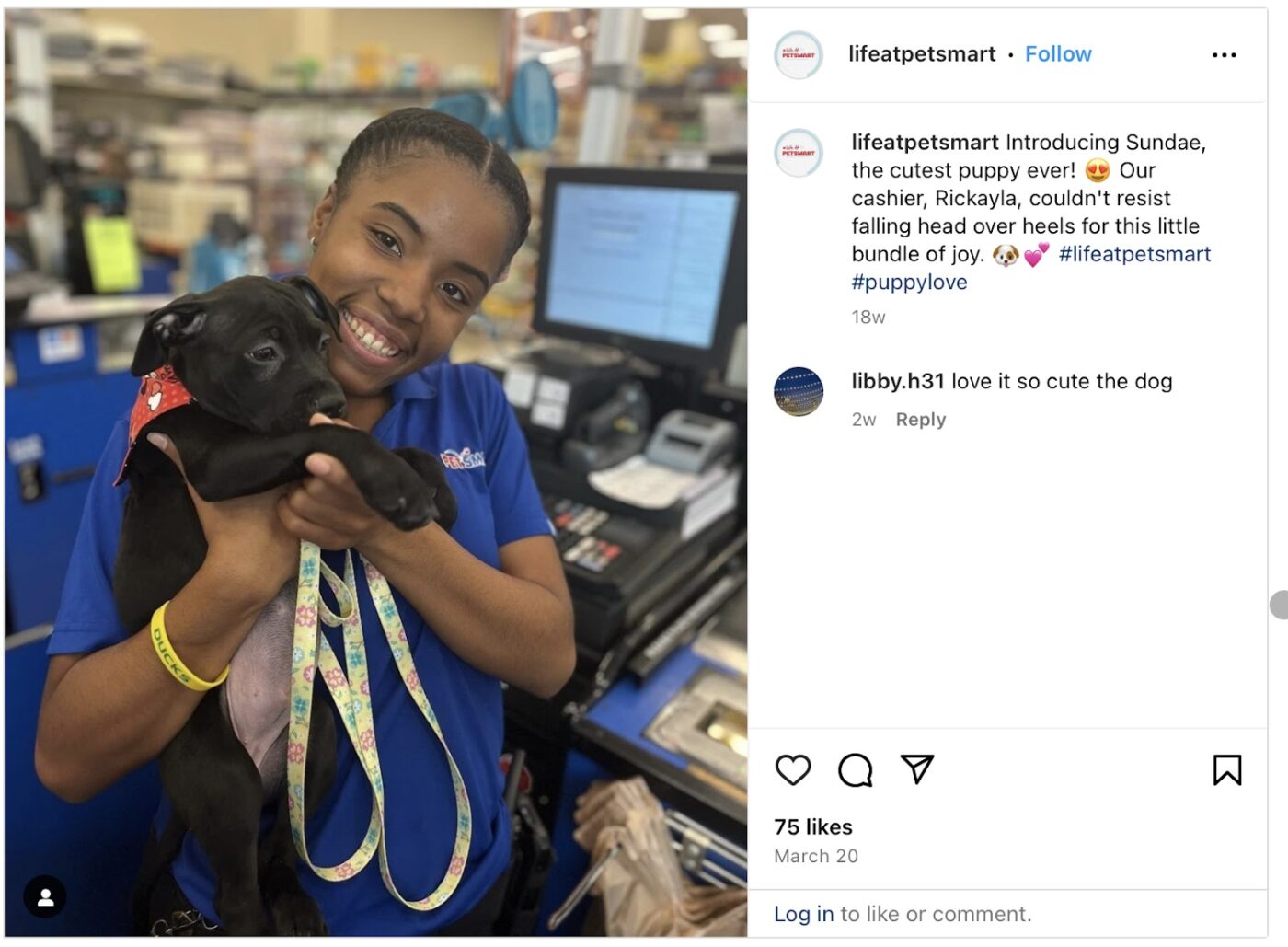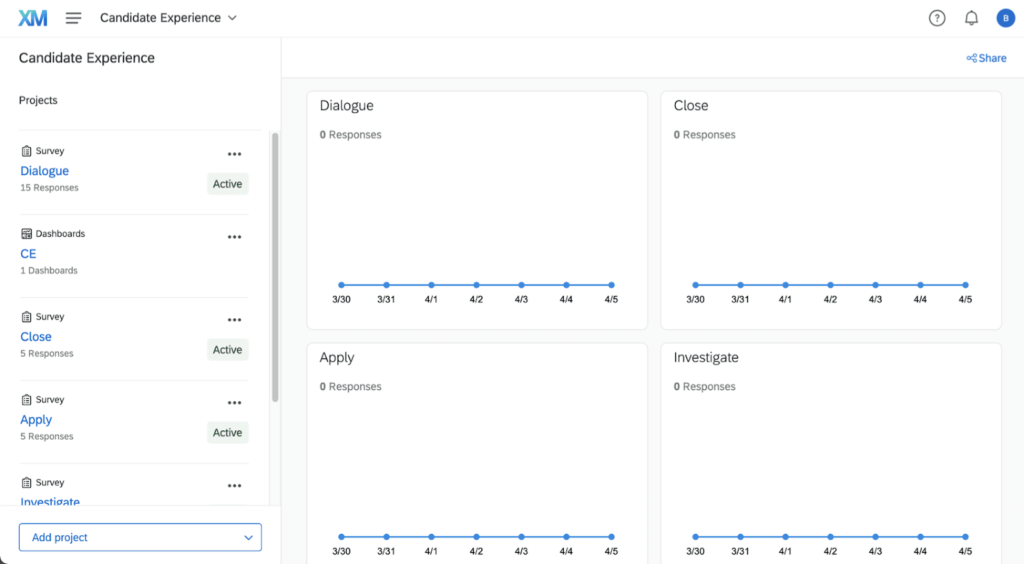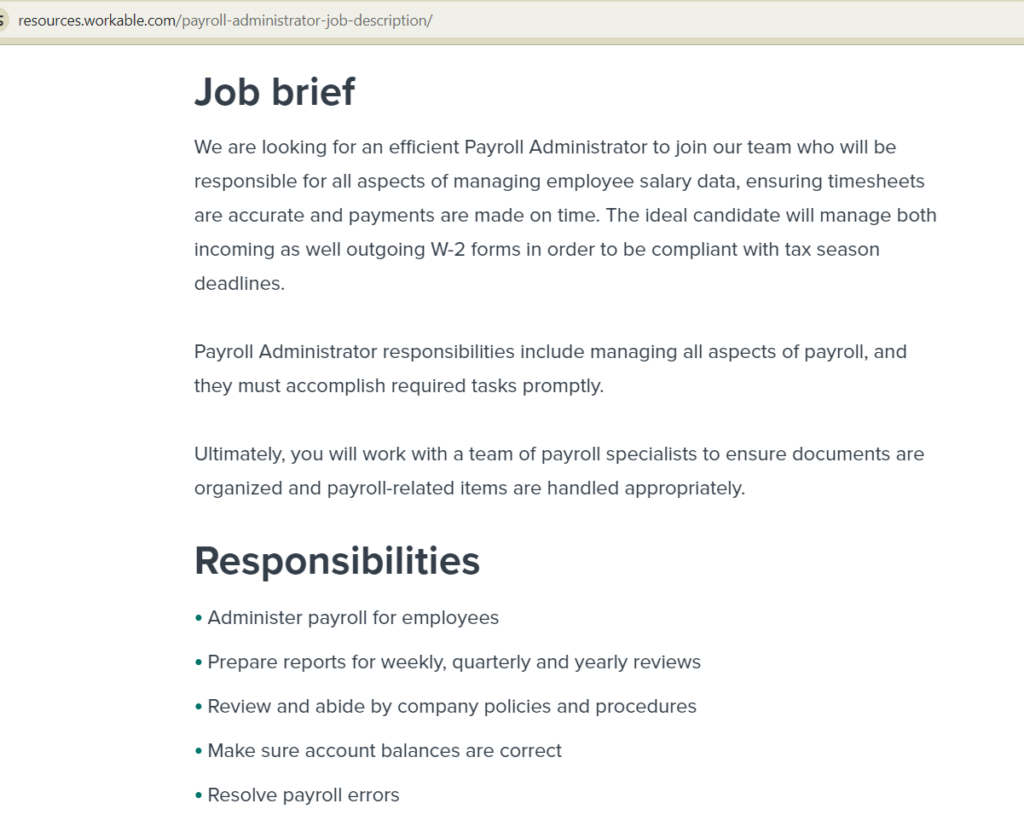Key takeaways
What is employer branding?
Employer branding is the process and results of communicating a company’s employee experience to potential and current employees. Overall, it may give candidates an idea of your company’s reputation (and its impact on their personal brands), employment offerings, and company culture.
To do so, branding often portrays the employee value proposition (EVP) used to recruit and retain talent and speaks to your mission, values, and work culture. And, while much of this value proposition is comprised of ideas, its elements may also include professional development programs; diversity, equity, and inclusion (DEI) programs; and employee benefits.
Overall, employer branding helps you compete in the market by attracting skilled talent to implement a strong competitive edge.
Employer brand vs corporate brand
| Corporate branding | Employer branding | |
|---|---|---|
| Purpose | Creating a positive association and image with offered products and services to increase revenue | Attracting and retaining top talent while reducing recruiting costs to ultimately create a competitive customer experience in the industry |
| Consequences of a weak strategy | Fewer sales | A less competitive brand due to internal skill and talent gaps |
| Audience | Customers and investors | Potential and existing employees |
| Communication channels | Advertising, public relations, search marketing, social media | Job boards, social media, career pages, about-us pages |
| Competition | Other companies in the industry for market share | Other employers for top talent |
| Incentives | Pricing, promotions | Competitive salaries, career development programs and employee benefits |
| Value proposition | Unique advantages of products or services | Employee value proposition (EVP) consisting of a competitive employee experience, company culture, and employee opportunities |
Benefits of implementing an employee branding strategy
Recruiting leaders worldwide agree that the employer brand has a significant impact on hiring. Indeed, there are numerous benefits to employee branding. These include:
- Increasing the ability to attract top talent.
- Detracting from negatives in the employee experience.
- Reducing time to hire and costs.
- Setting employees up for success by clarifying expectations.
- Improving employee retention.
Using the whole of these benefits, you create competitive advantages to positively and lucratively position your brands within your markets and before customers. Here is a closer look at each of these benefits.
How does employer branding impact employees? Find out: Employee Life Cycle: The HR Guide to Managing the Stages
How to create an employee branding strategy
Creating an employee branding strategy begins with improving and developing a positive employee experience. From there, you must audit your current employer brand and work to improve and further develop it. Here are the steps encompassed in this process:
1. Audit your employer brand
The majority of employees and job seekers research company reviews and ratings to decide on where to apply for a job. So, once you’ve created a positive employee experience, begin working on your current employee reputation. Review your company’s profile on career sites like Indeed and Glassdoor to see what past employees have said about your brand, including the interview process and employee experience. Also look at how your employee experience is spoken about on LinkedIn and other social media sites by past employees. In addition, offer surveys to current and even past employees to gather feedback on your employee experience.
Use this information to continue improving your employee experience. Then, ask current employees to offer new reviews on job search sites and company profiles to update it.
This step may be easier if you enlist the help of a reputation monitoring company such as Birdeye.
2. Improve the current employee experience
You will need to leverage current employee experiences to showcase your company’s employee brand. So, begin your employee branding development by focusing on improving the current employee experience.
Here are some ways you can do this:
- Create DEI programs to promote belonging among your employees.
- Craft employee policies to promote a safe environment for all employees.
- Provide competitive compensation and benefits packages.
- Build career development programs that keep employees engaged, productive, and successful in their careers at your company.
3. Explore and develop your EVP
Once you’ve built an employee experience that is fit to attract new talent, put that experience in writing. Begin by making a list of the values you need employees to embrace to continue cultivating the employer brand you seek.
Then, turn those values into a promise statement indicating what potential employees can expect on the job. As you do, be authentic by promising what you already offer, not what you wish to offer. Focus on the values that describe your brand, not on compensation packages or salaries.
Once you’ve written your EVP, post it on your website’s career and about-us pages, on your LinkedIn company page and on other recruitment materials. In addition, train your hiring team and recruiters to articulate and discuss your value proposition with potential candidates.
Companies such as LinkHumans can help you develop an EVP.
4. Give employees a platform
Now that you have a promise published and your employee experience aligns with it, give your current employees a chance to confirm they experience your value-proposition promise on the job. You can do so by giving employees a chance to share their employee experience in blog posts, reviews, videos, slideshows, and social media posts. Then, showcase them on your career pages, websites, about us pages, and social media channels.
5. Create a employer branding campaign
Now that you have campaign materials and an EVP, put these assets together and build on them to create an employer branding campaign. You’ve already begun posting testimonies of current employees on your website and social media pages. Now, develop your career and about us pages to include your value proposition.
It’s a good idea to also add an FAQ section on your website’s career page to answer questions about your employee experience, such as:
- What does your interview process look like?
- How do you support DEI in your company?
- What benefits does your company offer employees?
- How do you resolve employee concerns?
- How can employees offer feedback about their employee experience?
- What professional development programs do you offer employees?
6. Create a positive hiring and onboarding experience
While you need to inform potential candidates about the role offered in a job post, you also must use your employee branding assets to sell your company’s employee experience. Doing so helps weed out candidates who don’t find your value proposition attractive and bring in those who do.
This step begins with creating job descriptions that include your EVP. In addition, provide details about what potential candidates should expect in terms of benefits offerings, the interview process, internal professional development, and DEI programs. Also give them opportunities to hear from current employees by linking to assets that showcase your employees’ voices.
By offering transparency in what they can expect, you set your potential candidates up for success instead of disappointment, and build the foundation for a positive hiring and onboarding experience.
Once you’ve created a positive hiring and onboarding experience, you can measure your results and learn how to improve them using candidate experience measurement tools such as Qualtrics.
Recruiting and hiring software such as Workable offer free job description templates to help you get started in creating job posts. In addition, many recruiting software and candidate relationship management software offer tools to help you build a pleasant candidate experience.
Employer branding examples
Mollie and PetSmart both lean on key company assets, including their websites and social media channels to showcase unique and positive employee experiences.
Mollie
Payment processing company Mollie offers several avenues for potential candidates to understand what experience they’re signing up for when applying for a Mollie job and their chances of landing the job. In doing so, it attracts fitting candidates and weeds out those who are unlikely to thrive in the company. Here’s a closer look at how.
About page
Mollie’s “About” page gives potential employees a purpose to apply. It does so by telling a story of how the company makes a difference:
“Our mission and who we are hasn’t changed. We still love delivering products that solve problems and offering businesses an alternative to our industry’s unfairly complex and expensive solutions. Why? Because financial bureaucracy remains brilliant at keeping good ideas from growing.”
Applicants know they are joining a team that makes real people’s lives easier, a mission many would likely like to get behind.
In addition, it points out that it serves over 200,000 businesses, painting a picture of an established brand that can offer secure employment. And, for those candidates who are looking for diversity, it points out that it employs 750 team members across Europe, from Lisbon to London.

Careers page
Once you click on its careers page, you learn how candidates will experience the brand from within:
“If you love to create, disrupt and change things for the better, you’re Mollie-in-the-making. This is a place where change is constant. Up for it?”
This speaks to candidates who are looking to be on the front lines of cutting-edge technology. In doing so, it presents them with an opportunity to improve their experience and personal brands in the fintech industry.
And, once again, it speaks to candidates looking for a company that values diversity by pointing out that it has employees among 50+ nationalities and offices in seven countries. It also showcases pictures of quality workplace experiences across London, Milan, Lisbon and Maastricht.

FAQ section
Finally, its FAQ section offers information about what applicants will experience, thereby setting positive expectations:
“Our recruitment process is pretty straightforward. We want to give you the opportunity to get to know us and decide whether we could offer you the right challenge…after the submission of your application…you will hear from us in two weeks.”
It then goes on to outline the entire interview process so applicants can decide for themselves if it is worth it to them, thereby weeding out ill-fitting candidates before they even apply.
It also offers answers to other questions to give candidates an accurate understanding of whether they will fit with the company’s needs or not. This includes answering questions about the qualities and skills Mollie looks for in candidates and what benefits and perks Mollie offers employees. While the interview process is long, candidates can access this information to gauge their likelihood of a job offer, and if it will be worth it to them to pursue.
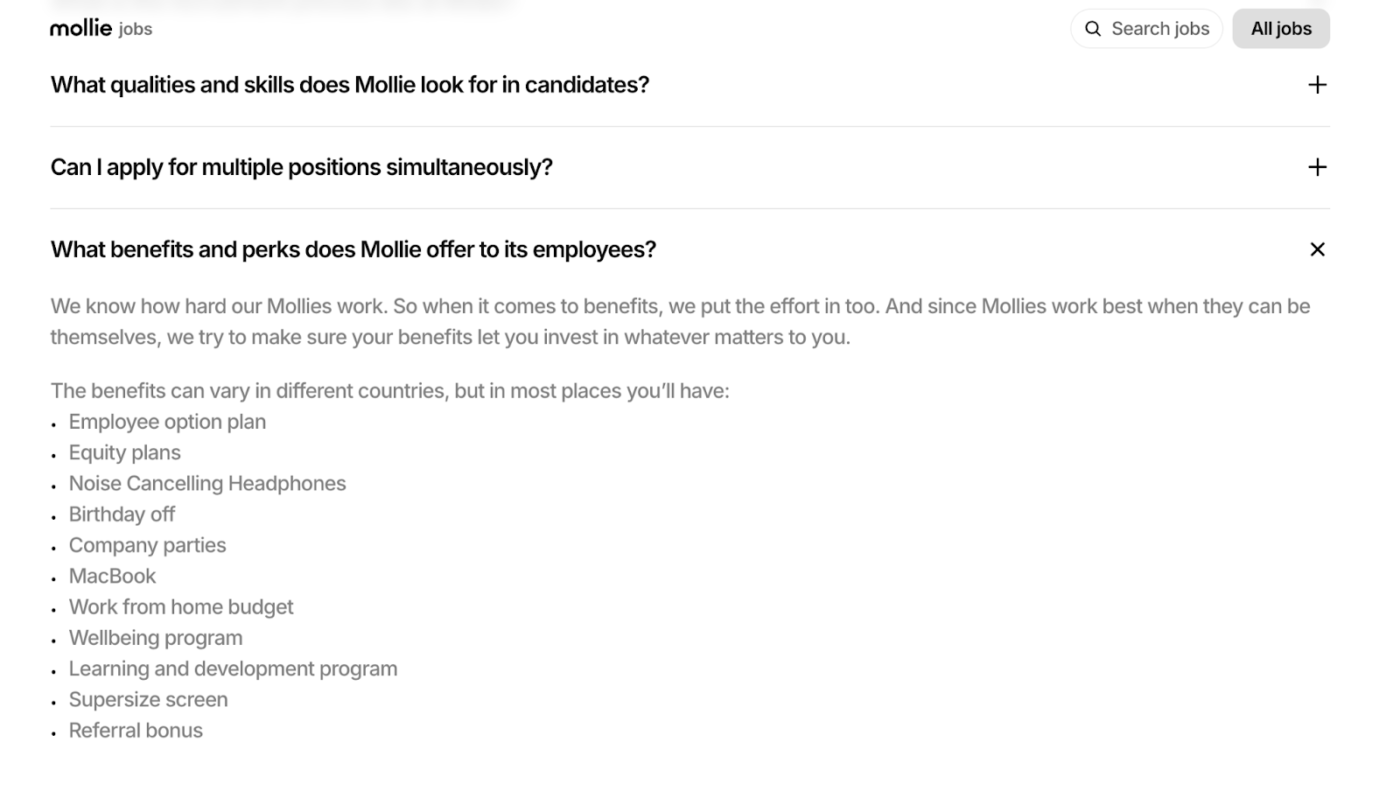
Social media
Mollie then brings its employee experience to life with its LinkedIn Trending Employee Content. Here, candidates can see videos, pictures and announcements about where employees are, how they’re involved in making a difference, the opportunities they enjoy, and what their employee experiences are like. Besides attracting employees, this initiative also gives Mollie a public face where employees can highlight perks and successes, and where clients can engage.

PetSmart
PetSmart, a pet supply chain selling pet products and offering pet services, disperses its employer branding strategy across its website and social media, offering a detailed inside look into life as a PetSmart associate. Here’s a deep dive into this strategy.
Careers page
Potential candidates can gather some telling information about what it might be like if they apply for a job at the company from the career page. First, an assortment of pets greet them, pointing to an opportunity to work in a fun environment. Pictures of employees smiling with beloved PetSmart furry, feathered, and slithery companions offer the animal-obsessed candidate motivation to join the team.
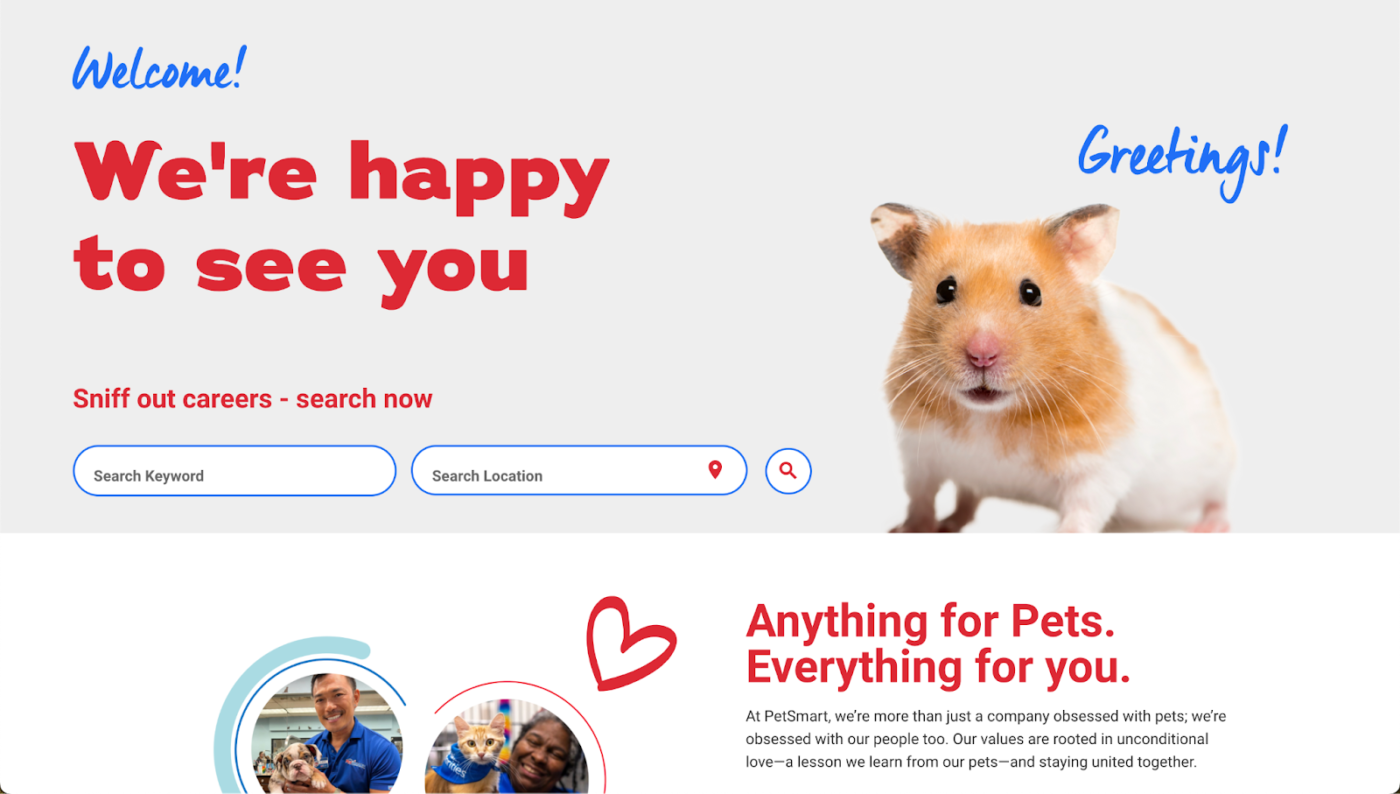
It goes on to offer a description of its employees and their values, giving applicants an insight into how they’ll fit into the company culture through meaningful statistics:
- 50K+ associates dedicated to doing anything for pets and pet parents.
- 78% of our associates are pet parents.
It also gives candidates a glimpse into how they can make a difference in the world, pointing out that the brand has supported the adoption of over 11 million pets.
FAQ section
PetSmart’s FAQ section is located at the bottom of its careers page. It offers answers to questions such as:
- Can you really bring pets on campus?
- Do you provide relocation assistance?
- What kinds of benefits do you offer?
- What can I expect from the interview process?
- Do you have daycare on-site?
- Do you offer monetary incentives for performance?
This list goes on and on as candidates scroll, showcasing every detail of what they can expect from a career at PetSmart. It even covers cultural questions such as “how does PetSmart listen and respond to feedback from associates?” and “how does PetSmart support associates to do anything for the care of the pets in our care?”
In the end, candidates explore whether they’re a good fit for the brand, whether the brand aligns with their values, and how any concerns are resolved throughout the employee experience. This means candidates come in fully aware of what they’re applying for, once again helping to weed out potential applicants who are unlikely to thrive at PetSmart, attract those who will, and ultimately save on recruitment costs in the long run.

Social media
On the brand’s careers page, potential candidates are encouraged to follow PetSmart’s #lifeatpetsmart tag on Instagram. When they do, they view and interact with posts that showcase what life is like for PetSmart associates. This public platform allows PetSmart to showcase its culture and also provides an opportunity to engage with its customers.
